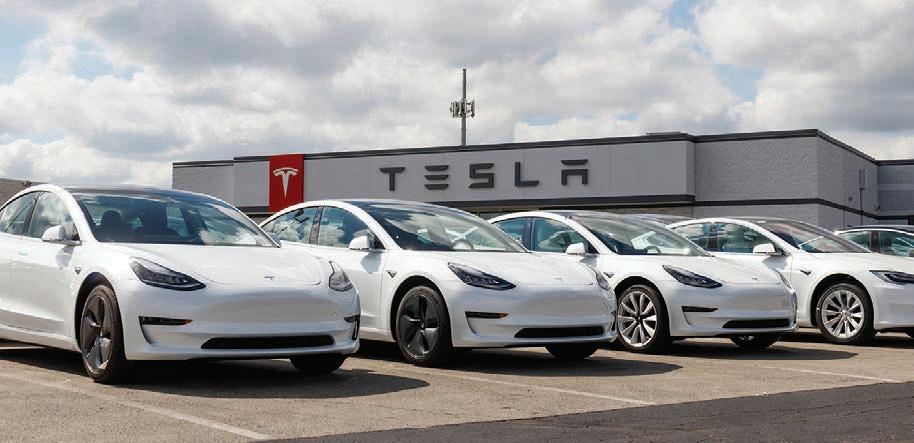
3 minute read
Target investment, rally society to compete with China, says bankers’ panel
PDAC | Energy needs demand huge ‘speed and scope’ in mining
BY BLAIR MCBRIDE
Prices and supplies of critical metals will increasingly hinge on government policy and geopolitical tensions, three of Canada’s top bankers said at the Prospectors and Developers Association of Canada convention on Mar. 6.
Speaking on a panel moderated by Northern Miner Group president Anthony Vaccaro, part of the “Peaks and valleys in mineral sector financing” session on the second day of the conference in Toronto, executives from three of Canada’s five major banks shared their thoughts on future trends in mineral markets.
The panel kicked off by sharing their picks in an online poll of which metal from a list of copper, uranium, lithium and gold will outperform in the energy transition.
Ryan Latinovich, global head of the mining and metals group at RBC Capital Markets chose copper.
“I think it’s really at the centre… between that energy transition piece [and] electrification,” he said. “The supply and demand fundamentals are clearly pointing to a structural deficit in copper, there’s long lead times to get projects on board, [it’s] highly capital intensive, and finding and developing quality copper projects is becoming increasingly tough and at increasingly lower grades.”
Michael Faralla, head of global mining investment banking at TD Securities picked uranium, saying that renewable energy isn’t the only solution in the energy transition.
“I think uranium as a cheap, low-carbon baseload power is going to be increasingly recognized as a part of that mix,” he said, adding that current uranium prices are incentivizing construction of new mines. “In terms of pure price appreciation, I pick uranium.”
Ilan Bahar, co-head of global metals and mining with BMO Capital Markets said that he agreed with the other panelists and took a middle ground between copper and uranium.
While no one on the panel chose lithium, which saw a dramatic run-up in price last year, Faralla noted the critical metal is widely recognized as the most consistently used across all battery metals.
He also said lithium’s recent prices are probably not sustainable.
Battery grade lithium carbonate was selling for US$54,925 a tonne at press time, up from US$70,675 a year ago, according to The Wall St. Journal
“There’s the old adage that the cure for high prices is high prices,” he said. “And those prices are going to incent more production. And we should come back to perhaps a more stable long-term equilibrium.”
‘No safe place’ With critical minerals now in high demand all over the world, they’ve become subject to geopolitics, and Vaccaro asked the panel how such moves as China paying for Middle Eastern oil in renminbi rather than dollars affects Western supply of the minerals.
“This is signalling that de-dollarization is becoming a big theme. Do you agree the world is becoming more bifurcated?” he asked.
Latinovich said demand is intensifying across geographic boundaries and around certain geopolitical orbits, creating tension in demand and constraints in supply. It has also shone a spotlight on sourcing minerals from West- ern-aligned countries, further disrupting supply and demand.
That alignment with the West isn’t guaranteed, and countries regarded as aligned, such as Panama pose their own risks, said BMO Capital Markets metals and mining analyst Jackie Przybylowski in a fireside chat before the bankers’ panel.
“There’s no safe place to do business anymore,” she said. “Panama was seen as a very safe jurisdiction. And if things can go badly for First Quantum (Minerals), it doesn’t feel like there’s anywhere that’s truly risk-free at this point. Managing the risk, being diversified is probably the key.”
Latinovich explained that in the long term, supply and demand tensions will pressure the pricing dynamics.
“If you break down what’s going on around critical minerals, with orbits of countries’ alignments around how we supply those minerals… it results in a one-way equation for me which is a very strong outlook on the pricing related to those commodities,” he said.
Agreeing with Latinovich, Bahar noted that in relation to M&A and financing, government policy towards critical minerals plays a role although it will take time to see results.
He pointed to the Inflation Reduction Act (IRA) in the United States, which incentivizes the production of electric vehicles if minerals are sourced from countries that have free trade deals with the U.S.
“You need a certain amount of supply and what people quickly realized [is that] supplies are not









